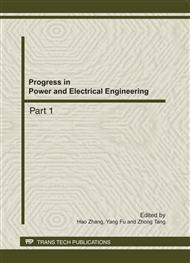p.389
p.394
p.401
p.406
p.413
p.419
p.429
p.433
p.438
Experimental Study on Microstructure of Fly-Ash from Circulating Fluidized Bed Boilers
Abstract:
Circulating fluidized bed (CFB) combustion techniques have been widely used in China. In order to improve CFB boiler performance it is necessary to study on microstructures of fly-ash. With the help of nitrogen adsorption instrument and scanning electron microscopy, the pore structure of fly-ash in circulating fluidized bed boilers are studied by nitrogen adsorption/desorption isotherms of fly-ash, hysteresis loop and pore distribution. The results indicated that different particle sizes of fly-ash in CFB boilers are of similar nitrogen adsorption isotherms, pore types and the pore size distribution, and the most probable pore radius of fly-ash is about 2nm. Adsorption isotherms of fly-ash is the second type, and the macro-porous and meso-porous types are tapered hole, parallel plate slit hole and the ink bottle shape hole. And meso-pore in proportion is the largest. Micro-pores are not discovered in fly-ash from CFB boilers.
Info:
Periodical:
Pages:
413-416
Citation:
Online since:
October 2011
Authors:
Price:
Сopyright:
© 2012 Trans Tech Publications Ltd. All Rights Reserved
Share:
Citation:


